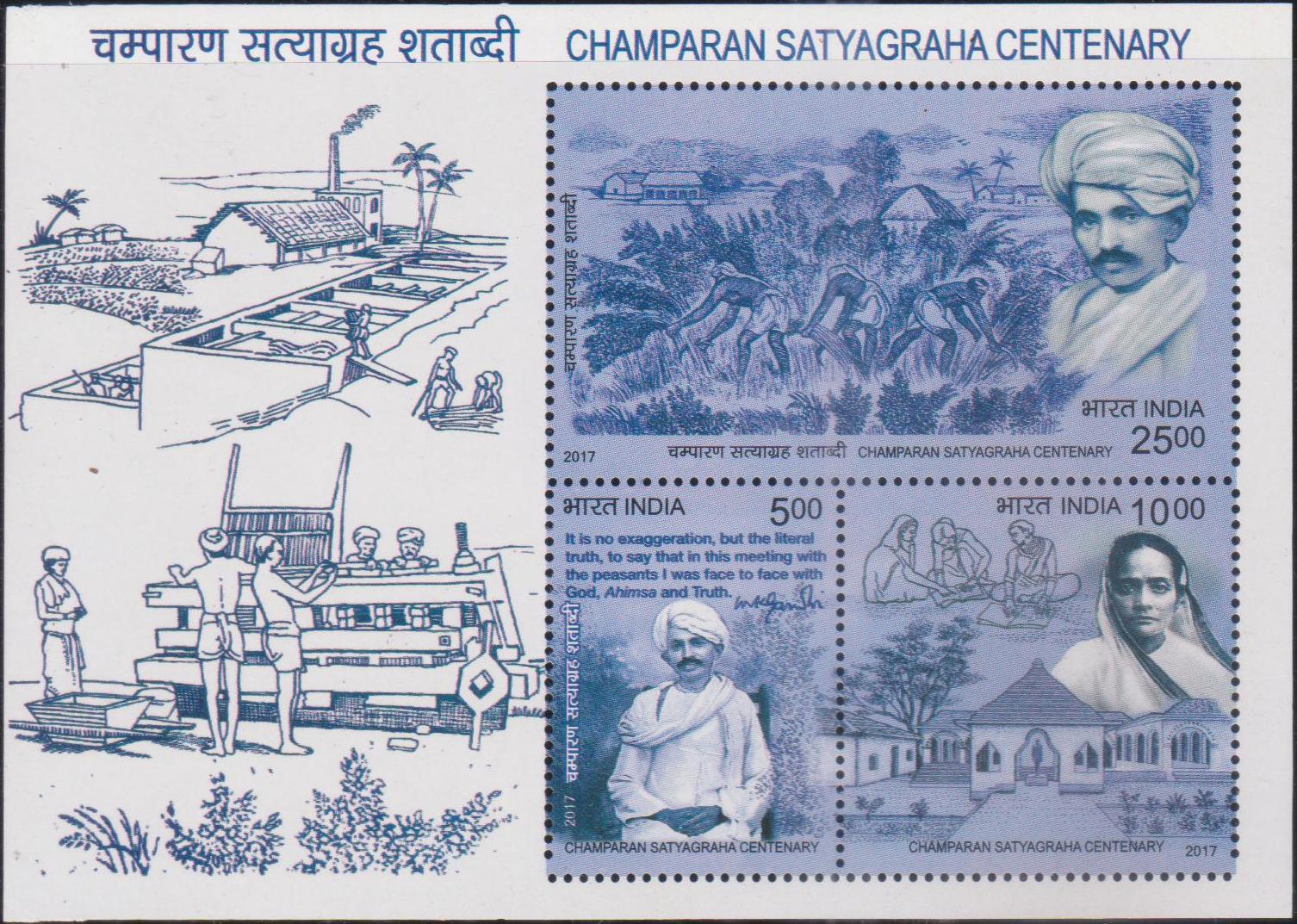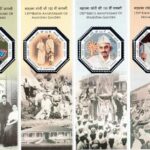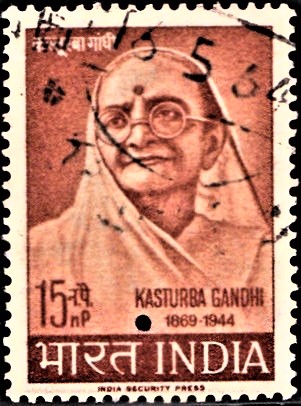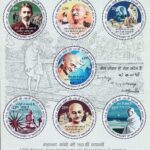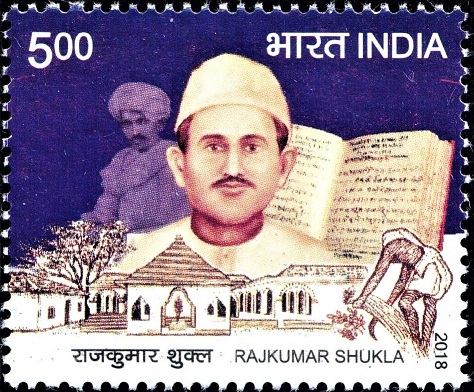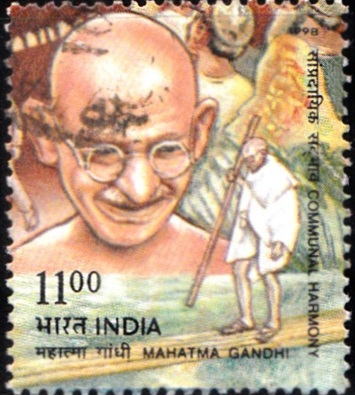
India on Mahatma Gandhi 1998
Complete Set of 4 nos of postage stamps on Mahatma Gandhi – 50th Death Anniversary :

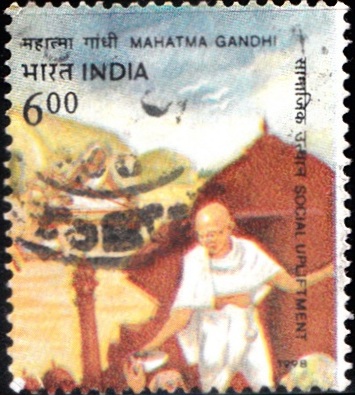
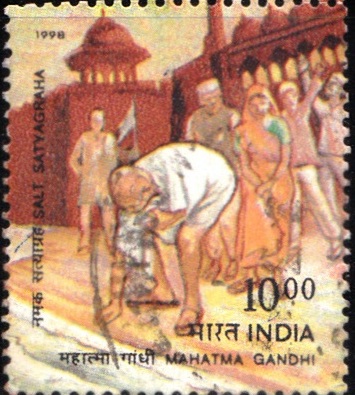
 Issued by India
Issued by India
Issued on Jan 30, 1998
Issued for : This set of four stamps with a composite design includes symbolic glimpses of these significant aspects of Gandhiji’s toils for the country. The Department of Posts joins the nation on the 50th anniversary of Gandhiji’s martyrdom and is privileged to issue this set of stamps as its homage to the Mahatma.
Credits :
Stamp & FDC : Sankha Samanta
Cancellation : Alka Sharma
Type : Stamps, Postal Used
Colour : Multicolor
Denomination : 200, 600, 1000 & 1100 Paise
Overall size : 6.68 x 5.76 cms.
Printing size : 6.68 x 5.76 cms.
Perforation : 13 x 13
Paper : Imported un w/m Adhesive Gravure Coated Stamp Paper in Sheets 50.8 x 53.5
Stamps Printed : 0.7 Million
Number per issue sheet : 12
Printing Process : Photogravure
Printer : India Security Press, Nasik
About :
- “I have that implicit faith in my mission that if it succeeds – as it will succeed, it is bound to succeed – history will record it as a movement designed to knit all people in the world together not as hostile to one another but as parts of one whole.” – Mohandas Karamchand Gandhi.
- On 30th January, 1948, Mahatma Gandhi, “Bapu”, as he was affectionately known to the people of India, fell to the assassin’s bullet as he walked to his evening prayer, plunging the entire nation into mourning. The nation’s grief was best expressed by the words of the first Prime Minister, Pt. Jawahar Lal Nehru, “The light has gone out of our lives and there is darkness everywhere…. The light has gone out, I said, and yet I was wrong. For the light that shone in this country was no ordinary light. The light that has illumined this country for these many many years will illumine this country for many more years…. it represented the living, the eternal truths reminding us of the right path…”.
- Gandhiji shaped and led the national struggle that brought freedom for the Indian people. His philosophy and ideals, (which perhaps, gave rise to the title of Mahatma meaning great soul), his gospel and technique of non-violence are the imperishable gifts to humanity. Some of the social ideals and programmes that he strove to inculcate among generations of Indians have been symbolized through the composite design of the set of four stamps issued by the Department of Posts as a tribute to Bapu on the 50th anniversary of his martyrdom.
- Gandhiji went to Champaran, Bihar in 1917 where peasants were suffering under an oppressive system established by European indigo planters that compelled them to grow indigo on their land and part with the whole crop for rent. The Police Supdt. ordered Gandhiji to leave the district and on refusal, he was summoned to appear in court the next day and arrested. He had to be released without bail because he refused to furnish bail. The case was later withdrawn and the Government of the day was obliged to set up a Committee of Enquiry, of which Gandhiji was a member. The Committee’s report led to the abolition of the system of compulsory planting of indigo. This, the first experiment with non-violent protest in India was indeed a turning point in the struggle for freedom, ushering in a new element into the political struggle for independence by involving the common people.
- Gandhiji’s passionate concern for socio-economic upliftment of the deprived sections of society, whom he called the children of God was an important element of his social philosophy. He insisted that freedom was to be measured by the well-being of the millions who lived in the villages. “India lives in her villages, not in her cities”, he said, “When I succeed in ridding the villages of their poverty, I have won Swaraj.”
- Gandhiji believed firmly in opposing that which was morally unjustifiable and he could, in his own inimitable way, give expression to such a protest. His opposition to the salt tax imposed by the British, was thus elemental and yet effective in rousing the nation. It was on 12th March, 1930 that Gandhiji set off for Dandi and began the Salt Satyagraha which history records as a unique protest – so simple and yet so telling in its effect.
- Gandhiji travelled from village to village barefoot, to contain the outbreaks of communal violence which followed in the wake of the country’s partition at the time of independence – “I have only one object in view and it is a clear one: namely, that God should purify the hearts of Hindus and Muslims and the two communities should be free from suspicion and fear of one another.” Perhaps, the best description of Gandhiji’s part in maintaining communal peace in Bengal was made by Lord Mountbatten, when he referred to Gandhiji as, “The one–man boundary force, who kept the peace”. What Gandhiji achieved by his personal effort at this crucial junction in the history of the sub-continent is now a part of history.
- Text : India’s Struggle for Independence: N.C.E.R.T. Mahatma Gandhi – Publications Division.


